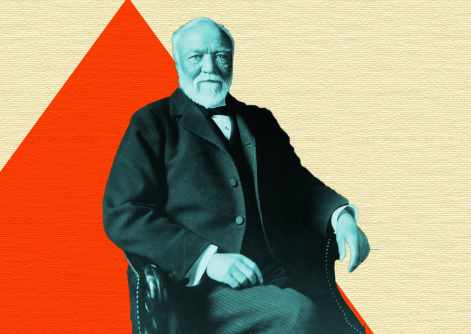Honesty may be one of the rarest things in the nonprofit world. It is especially unusual in philanthropy conferences, and so how welcome was last week’s Alliance for Charitable Reform Summit for Leaders, held as part of Philanthropy Week in Washington/Foundations on the Hill. (The Alliance for Charitable Reform is a project of my old employer, the Philanthropy Roundtable, which joined with the Council on Foundations to sponsor these efforts.)
As usual the ACR put on a conference that was intellectually stimulating, with both substantive subject matter and—something achingly needed in the sector—substantive debate.
Two of the three panels and the opening remarks by Philanthropy Roundtable president Adam Meyerson are available on video at ACR’s website. The first panel, featuring top House and Senate staffers, was off the record. It dealt with the ramifications for the charitable sector of the President’s just-released budget and the “discussion draft” of a tax reform bill just proposed by House Ways and Means Chairman Dave Camp (R-Mich.). Several panelists offered analysis of these measures that largely mirrored the ACR’s own views, available here, and the consensus in the room was that substantial changes in tax law are unlikely in this election year.
ACR has critiqued the President’s new budget, especially its call for a 28 percent cap on all itemized deductions and its “Buffett Rule,” which would impose a minimum tax rate of 30 percent on individuals and families who earn more than $1 million annually. ACR has applauded the President’s proposal to streamline the private foundation excise tax into a single rate of 1.35 percent.
ACR takes a more mixed view toward Chairman Camp’s discussion draft, concerned by, among other things, its requirement that only charitable contributions that go beyond 2 percent of a filer’s adjusted gross income would be deductible, but pleased by such provisions as the consolidation of foundation excise tax rates into a flat 1 percent. Another concern is the provision that would require donor advised funds to distribute all contributions within five years or face a large tax.
As Adam Meyerson declared in his opening remarks, “It’s clear we still have work to do with members of Congress.” Meyerson also stressed one of the overarching principles of ACR and the Philanthropy Roundtable:
A vibrant private sector generates the wealth and income that makes philanthropy possible.
That lodestar especially came into play in the final panel, which was an informal debate. But first let me mention some highlights of the day’s second panel, featuring a broad range of representatives from different parts of the charitable sector—foundations, cultural institutions, and more—who each explained different ways to make the case for the sector and the charitable tax deduction to elected officials and the public.
Suzy DeFrancis, chief public affairs officer at the American Red Cross, stressed how charitable giving makes it possible for charities like the Red Cross to marshal armies of volunteers: While volunteers provide their services for free, it is not free to manage volunteers. Thanks to generous donors, the Red Cross can enjoy something like $124 million worth of volunteer hours.
Laurie Norton Moffatt, CEO of the Norman Rockwell Museum in Stockbridge, Massachusetts, explained something too little considered; namely, how cultural institutions like museums, though they do not provide large amounts of direct social services to the poor, nonetheless stimulate both local economies and civil society as a whole. This was dramatically demonstrated in the following panel, when Howard Husock, a scholar at the Manhattan Institute, explained how his orphaned father, who could easily have ended life on the streets, was inspired to become an engineer because of frequent trips to the Franklin Institute, a museum founded by Ben Franklin.
Mason Rummel, president of the James Graham Brown Foundation, emphasized how foundations like hers utterly depend on pre-existing charities to be able to do good, and she warned that the consequences for those charities of tinkering with the charitable deduction could be gaps in services, diminished capacity, even closure.
Steven Woolf, senior tax policy counsel at the Jewish Federations of North America, gave an eloquent and principled account of the origin of the charitable tax deduction. Contributions, he insisted, have always been exempt from taxation because the donor is not consuming anything with this money, he is giving it away. This deduction, Woolf added, is the only deduction in tax law where no benefit flows back to the individual. Any limits on charitable deductions would have the perverse effect of treating the most generous donors worse than average donors.
In addition to these principled arguments, Woolf’s plea included blunt words about the ways that diminished charitable giving would harm his own charitable organization, which represents 153 Jewish federations and over 300 network communities that raise and distribute more than $3 billion annually for social services and educational needs. Roughly 95 percent of the group’s income comes from around 5 percent of its donors, Woolf explained, with a huge surge at the end of every year. Much of that giving comes from deceased donors’ estates, he added. High-dollar donations and estate bequests obviously come from sophisticated donors, who will be sensitive to shifts in tax policy, which means the stakes are large.
Moderator Sandra Swirski of ACR reiterated the need for the audience to help move Congress from the view of the charitable tax deduction as a "subsidy" of good works by the government to the tax-base theory advocated by Woolf: "If you give it away, it's simply not income." The former view, Swirski noted, means that Congress could "dial" the subsidy up and down as it pleases, while the tax-base theory means Congress has no right to money charitably donated, period.
The final panel began with a stark challenge to received thinking in the charitable world, and wherever you come down on these issues, we can all applaud the ACR’s guts for letting such unconventional opinions be heard and debated. The panel promised “Two Perspectives on Tax Reform and Private Giving Incentives,” and it opened with a challenge from Stephen Moore, an economist formerly with the Wall Street Journal and now at the Heritage Foundation. Stressing that a fast-growing economy is the greatest spur to charitable giving, Moore called for eliminating all tax deductions and moving to the simplest possible tax system with the lowest possible rates—reforms which he believes will result in both a growing economy and a flourishing nonprofit sector.
To bolster his argument, Moore cited the 1980s, which were one of the best times for giving even though the value of the charitable deduction was plunging as top marginal tax rates declined from 70 percent to 28 percent. Today, on the other hand, we see the nonprofit sector growing somewhat, even as the for-profit sector struggles to maintain minimal growth. An exception is seen, however, in Florida and Texas, two states whose economies are booming, as is their charitable giving, even though these states have no income tax from which to deduct such giving.
Howard Husock, Moore’s sparring partner, explained that he found Moore’s arguments appealing in theory but potentially dangerous in practice, given how unlikely the country is to move toward the radically simplified tax code Moore desires. It’s critical, Husock argued, that when approaching public policy we have the goal of keeping charitable giving at least steady, if not higher. Husock decried the President’s proposed cap on deductions of 28 percent. “We can be pretty darn sure that this would decrease giving,” he insisted, especially in “blue” states with high tax rates, and he objected to treating the charitable deduction the same as deductions like that for mortgage interest.
Husock also fretted over claims by Chairman Camp that his discussion-draft bill would cause a rise in giving. That’s “unclear,” Husock insisted, and he was concerned by Camp’s estimate that after the bill’s enactment, only 5 percent of filers would itemize deductions. That would make those wealthy taxpayers a big target, he observed.
The panel’s moderator, Joanne Florino of the Philanthropy Roundtable, chimed in that some states, such as Kansas and North Carolina, have been able to pass tax simplification reforms but still keep their charitable deductions, though she noted that this has required both their legislatures and governors’ mansions to be in Republican hands.
Moore made other controversial arguments that, agree with them or not, provided far more fresh air than one almost ever enjoys at philanthropic conferences. He challenged the nonprofit righteousness, for example, of colleges with big endowments and big-time sports like the NFL.
Again, kudos to the ACR for making it possible to have such free-wheeling discussions.
A Postscript
My friend and sparring partner Rick Cohen, a star reporter for the estimable Nonprofit Quarterly, was less impressed by Philanthropy Week in Washington. In his most recent "Cohen Report," he makes the reasonable point that the ACR and Council on Foundations generally instructed their constituents to downplay the “complexities and challenges of U.S. philanthropy” when speaking to Congress.
There’s something to that, but of course the inclination of Congress to run roughshod over all of us requires strong pushback. And then there’s the shocking ignorance of the charitable sector on Capitol Hill, especially among the actual Members. I remember my jaw dropping at a Senate hearing some years ago because of the gaps in some Senators’ understanding of the most basic features of nonprofits. (One Senator, for instance, obviously had no idea of the difference between a 501(c)(3) and a 501(c)(4) group.)
But Rick goes astray when he takes inconsistent positions on how the sector should engage disputed public policies. Early in his report he has an entire section objecting to what he sees as the ACR’s “Anti-Government Messaging,” by which he means the view that
charitable giving is more efficient and more effective than government spending and therefore to be preferred.
Apparently, nonprofits shouldn’t be “anti-government” but should instead be docile and follow the government’s lead, especially now that the President’s new budget has “called for noticeable increases in spending for social safety net programs.”
If members of Congress heard the tenor of some of the comments from foundations about the greater efficacy of charitable giving, it would be a problematic message for galvanizing this nation to deal with social problems that need public commitment and cannot be left to the discretionary decisions of private grantmakers.
Got that? Keep your “discretionary decisions” to yourself, and don’t get in the way of a government that knows best and performs better. Cohen continues,
Setting up nonprofits as purported paragons in contrast to government agencies is often dangerous, ill-informed, and a slap against the work of the women and men who have made public service through government employment their commitment to their neighbors.
And yet, toward the end of the same report, Cohen reverses himself—contradicts himself?—on the question of whether the nonprofit sector should be subservient to government. He takes up a criticism made by “education advocate Diane Ravitch,” who challenges “the dominance of foundations such as Walton and Gates in federal education programs.” Cohen explains why that’s just not right:
When foundations become part and parcel of government programs, their most effective role as supporting nonprofits to be counterweights to government ... gets lost in the mix.
If this has your head spinning on the proper relationship between foundations and the government, your head will spin even faster when you consider that in one paragraph, praising a public-private partnership launched by the Obama Administration, Cohen ends by lauding
the independence of foundations, the fact that they aren’t clients or handholders of government, but a separate sector that engages in programs meant to compel appropriate governmental action.
Then in the next paragraph he agrees with Ravitch's suggestion
that the conversation should be about “what Congress should demand from foundations, not what foundations should ask for.”
Sometimes, it seems, foundations are to be subservient to government and its priorities, and to submit to Congressional demands, while at other times foundations must be independent counterweights that "compel" government to change course.
Perhaps this doesn't entail Rick contradicting himself after all. On the one hand, Rick likes it when federal welfare programs are expanding. On the other hand, he and Ravitch dislike the way the current U.S. Department of Education has shown some willingness to move (very slightly) in the direction of education reform favored by the Walton and Gates foundations. These foundations have supported education reforms (charter schools, for instance) that provide more freedom to parents and students, rather than leaving them at the mercy of existing, government-run schools.
If we combine these two inclinations into what we could call "Rick's Rule," it seems that foundations are supposed to acquiesce to government if it is expanding itself at the expense of the private sector, but foundations are to confront government and compel it to change course if it is pursuing policies that would expand the freedom of citizens to operate outside narrow government control.
Somehow I don't think that's a path to a flourishing charitable sector.







Good coverage, Scott. Thank you! Readers who would like to read more on the conceptual framing of tax exemption and the charitable deduction might check out the symposium in the 2012 volume of Conversations on Philanthropy here: http://www.conversationsonphilanthropy.org/journal/volume-ix/